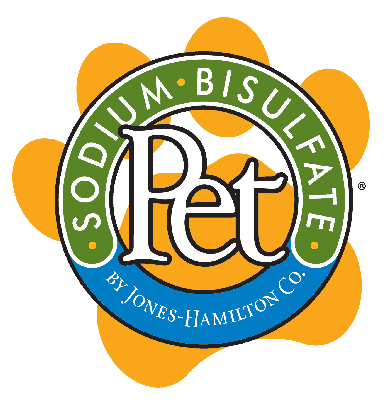Urine Acidification Research
Reduce the Risk of Urinary Tract Disease from Struvite and Calcium Oxalate Stones with SBS Pet®
The higher the grain volume in pet food, the higher the pH of the urine. In high pH environments, struvite stones can form in a cat’s lower urinary tract and cause common lower urinary tract diseases. In some cases, complete obstruction occurs. A urine pH of 6.0 to 6.5 is an acceptable range to prevent the formation of crystals.
Struvite stones (magnesium ammonium phosphate) were the most common urolith in cats during the 1980s and has recently returned to being the most prevalent. Lowering urine pH, reducing levels of dietary magnesium and phosphorus, and increasing urine volume can help control the formation of struvite. Sodium bisulfate effectively lowers urine pH, does not add phosphorus to the diet, and helps promote increased water consumption, making it a healthy alternative to reduce the risk of urinary tract disease.
Watch to Learn Why SBS Pet is the Best Choice for Urinary Health
Urine Acidification
Urine acidification can dissolve existing struvite crystals and help control the formation of new crystals. Dr. George Fahey evaluated sodium bisulfate for urine acidification3. Eighteen cats were utilized in a four-week period. Three diets contained sodium bisulfate and three contained phosphoric acid. The acidifiers were added at 0.4, 0.6 and 0.8% concentrations. Cats were acclimated to the test diets for 6 days. On day 7, urine samples were collected at 0, 4, and 8 hours post-feeding via cystocentesis. All of the test diets maintained a urine pH between 6.0 and 6.5, the range that helps control struvite formation.
Increased Water Consumption
The addition of sodium bisulfate to the diet can help increase water consumption, which helps reduce the risk of struvite and calcium oxalate stones by diluting the urine. Sodium has a stimulatory effect on hormones vasopressin and angiotensin, which drive thirst4. WALTHAM Centre for Pet Nutrition assessed the effect of dietary sodium content on the water intake and urine composition of adult cats fed 23 commercially-available dry diets for 21 days5. Cats that were fed diets higher in sodium had higher water intake, increased urine volume, lower urine specific gravity, and lower relative supersaturation for calcium oxalate.
Mode of Action for Urine Acidification
Sodium bisulfate lowers urine pH by the addition of sulfate to the diet. The following excerpt from The Prediction of Urine pH Using Dietary Cations and Anions in Cats Fed Dry and Wet Foods6 explains the mode of action in more detail: “Sodium bisulfate has been shown to lower urine pH in cats. When compared with phosphoric acid, the sodium bisulfate-containing foods were able to maintain similar urine pH and no differences were observed between the 2 dietary acidifiers.” “When dietary sulfur (sulfate) and other anions (chloride and phosphorus) are absorbed, there is a shift in the cation-anion balance to a more negative state (toward metabolic acidosis). This results in an increase in arterial concentration of hydrogen ions. The body tries to maintain a slightly alkaline arterial blood pH (approximately 7.4) by responding to this increase in hydrogen ions through 4 processes. The processes include:
- extracellular buffering;
- intracellular and bone buffering;
- respiratory buffering; and
- renal excretion of the extra hydrogen ions.
The first 3 processes take action to minimize the increase in hydrogen concentration until the kidney restores acid-base balance. The kidney restores the acid-base balance by eliminating the excess hydrogen ions in the urine, thus reducing urine pH.”
Calcium Oxalate Stones
Research indicates that high levels of calcium in the diet may increase the risk of calcium oxalate formation by increasing urinary calcium concentrations7. When phosphoric acid is added to the diet, additional calcium may be required to maintain the calcium/phosphorus ratio to prevent bone loss. Phosphoric acid is used for preservation of ingredients, palatability enhancement, and urine acidification. A combination of these uses in the same diet may require high levels of calcium to balance the phosphorus. SBS Pet preserves ingredients, improves palatability, acidifies the urine, and promotes water consumption without adding phosphorus.
